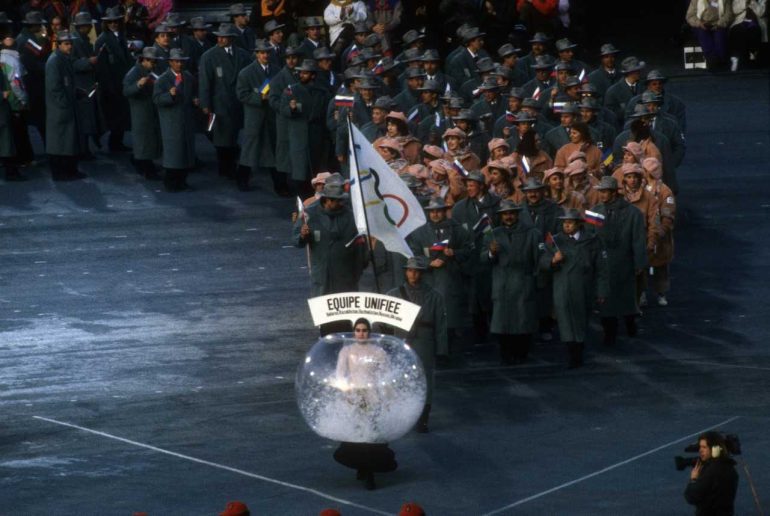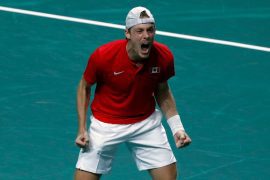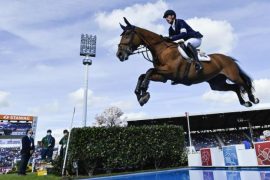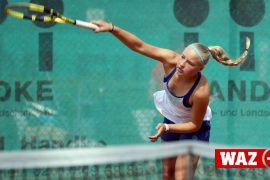
Three athletes from three countries of the former Soviet Union on the Olympic podium in artistic gymnastics. Three flags were raised: Belarusian, Ukrainian and Azerbaijani. But victory belongs to only one team, the so-called United team. Here in Barcelona in 1992, shortly after the collapse of the Soviet Union, Soviet athletes performed together for the last time. Six months earlier, this combined team made its debut at the Albertville Winter Games, just six weeks after the Soviet Union – and with it its state organs – ceased to exist. New state structures such as the Olympic Committees were created.
“Combined team” as the only option to participate in the Olympics
Russian sports journalist Alexander Shmurnov says, “A united team was essential for athletes. Otherwise, if they wanted to represent Ukraine or Kyrgyzstan, for example, they would have missed the Games. It was not possible to get in this short time.” Documents for admission to prepare for the national team in good time.” The United team played neutral in Albertville. Instead of the red Soviet flag, the white Olympic flag was shown. Instead of a hammer and a sickle – five colored rings. Things got a little more colorful in Barcelona: the anthems of their home countries were played and their national flags were used at award ceremonies for athletes in individual competition.
Darius Kasparitis: “At the World Junior Championships in Germany in December 1991 we still played in shirts that said USSR – and after New Year’s Eve we wore neutral shirts,” recalls Darius Kasparitis, who He was an ice hockey player on the United team. time and became Olympic champion in Albertville at the age of 19. Kasparitis was not the only United to see the Olympics as their first major competition. In the late 1980s – early 1990s, the former empire experienced not only political but also economic unrest. Money was tight, funding was cut, talented athletes traveled abroad in search of a better life. “Our team was so young, I got there unexpectedly,” says Kasparitis: “The average age was probably 23. The team wasn’t made up of celebrities, by that time they were all gone.”
Major challenges in preparing for the 1992 Olympics
Preparation for the Summer Games was also difficult for the combined team. The coach of the boxing team, Konstantin Koptsev, also had to shell out his pockets to prepare his athletes for the Games. In addition, there was team competition between the newly formed states, Koptsev says: “After the declaration of independence of the states and the formation of a united team, each representative of the different countries tried to bring their athletes into a single team. In my case it happened with threats as well.”
However, the three post-Soviet countries did not want to compete for a place in the combined team. In 1992, Latvia, Lithuania and Estonia became independent nations. These countries were previously part of the IOC from the 1920s to the 1930s. But with the Stalin-Hitler Pact of 1939, they lost their independence at the hands of the Soviet Union. “Estonia, Latvia and Lithuania had been waiting for the end of the Soviet occupation for more than 40 years. It was clear that they would seize the opportunity as soon as it presented itself,” says journalist Alexander Shmurnov.
Games in the Baltic States as a Sign of Independence and Sovereignty
In the late 1980s, demands for independence in the Baltic countries intensified, with protests getting bigger and bigger. Even in sport, the people strove for sovereignty. In late 1988 and early 1999, Latvia, Estand and Lithuania re-established their Olympic committees. But the IOC recognized them only two years later, when it became clear that the Soviet Union was about to collapse. The initial struggle for sovereignty paid off for the Baltic athletes, says Alexander Shmurnov, because: “It was not for nothing that they prepared for the Albertville Games while most of the states were still waiting. The collapse of the Soviet Union Despite what happened, we didn’t really know what to do next”.
However, athletes from Latvia, Lithuania and Estonia were allowed to decide whether to perform in their national teams or in a combined team. The two played in the Latvian unified basketball team. And Lithuanian Darius Kasparitis was a defender on the ice hockey team: “I chose the united team because the best ice hockey was always played in Russia. But I thought I would still represent Lithuania because everyone knows I’m from there. After that I played for Russia in three more Olympic Games, but the Lithuanians were not very happy with it.”
Despite a very young team and political and economic chaos – the United team side won the gold medal at Albertville 1992 after beating Canada 3–1 in the final. In the medal table, former Soviet players finished second in Albertville and first in Barcelona. The result would not have been so good if the nations had started individually, thinks Konstantin Koptsev: “Everyone trained in a team for so long, according to a certain method, everyone knew the particular characteristics. So it was good that we still performed together”.

Web guru. Amateur thinker. Unapologetic problem solver. Zombie expert. Hipster-friendly travel geek. Social mediaholic.





